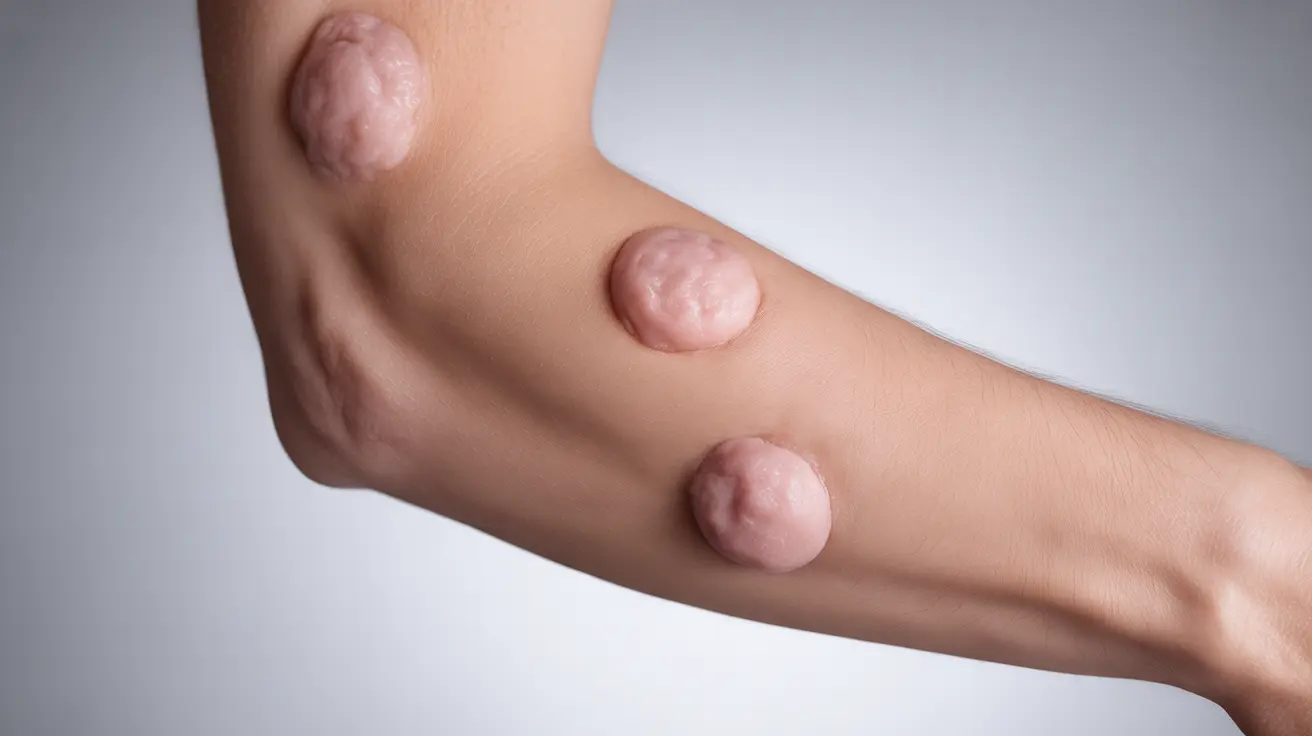Rheumatoid nodules are firm, painless lumps that commonly develop under the skin in people with rheumatoid arthritis (RA). These nodules represent a significant manifestation of RA and can provide important clues about disease progression and severity. Understanding their nature, treatment options, and impact on overall health is crucial for both patients and healthcare providers.
While not all RA patients develop rheumatoid nodules, they occur in approximately 25% of individuals with the condition. These nodules can range in size from a few millimeters to several centimeters and may appear individually or in clusters.
Characteristics and Location of Rheumatoid Nodules
Rheumatoid nodules typically develop in areas that experience pressure or repeated mechanical stress. Common locations include:
- Elbows and forearms
- Fingers and knuckles
- Heel and Achilles tendon
- Spine and other pressure points
- Back of the head
These nodules usually feel firm to the touch and are generally immobile when pressed against bone but may have some mobility when located in soft tissue. While they're typically painless, they can become tender or uncomfortable if they develop in areas subject to frequent pressure or friction.
Diagnosis and Associated Factors
The presence of rheumatoid nodules often indicates more severe or advanced RA. Healthcare providers typically diagnose these nodules through physical examination and may recommend imaging studies such as ultrasound or MRI to confirm the diagnosis or rule out other conditions.
Risk Factors
Several factors can increase the likelihood of developing rheumatoid nodules:
- Positive rheumatoid factor (RF) in blood tests
- Long-standing or severe RA
- Smoking
- Certain medications, including methotrexate (which can rarely cause accelerated nodulosis)
Treatment Approaches and Management
Treatment for rheumatoid nodules often focuses on managing the underlying RA condition. Effective control of RA activity may help prevent new nodules from forming and potentially reduce existing ones. Treatment options include:
Medical Management
- Disease-modifying antirheumatic drugs (DMARDs)
- Biologic medications
- Steroid injections for problematic nodules
- Topical treatments for comfort
Surgical Intervention
Surgery may be recommended in specific cases where nodules:
- Cause significant pain or discomfort
- Interfere with joint function or movement
- Become infected or develop ulcerations
- Create cosmetic concerns that impact quality of life
Prevention and Lifestyle Modifications
While preventing rheumatoid nodules entirely may not be possible, certain lifestyle changes can help manage their impact:
- Protecting affected areas from pressure and trauma
- Using padding or protective equipment during activities
- Maintaining good overall RA control through medication adherence
- Quitting smoking
- Regular exercise as tolerated
- Proper nutrition and stress management
Frequently Asked Questions
What are the common symptoms and locations of rheumatoid nodules? Rheumatoid nodules typically appear as firm, painless lumps under the skin, most commonly found on elbows, fingers, knuckles, and other pressure points. They can vary in size and may appear individually or in groups.
How are rheumatoid nodules typically treated, and when is surgery necessary? Treatment primarily focuses on managing underlying RA with DMARDs and biologics. Surgery becomes necessary when nodules cause significant pain, limit joint function, become infected, or create cosmetic concerns that impact quality of life.
Can lifestyle changes or dietary supplements help prevent or reduce rheumatoid nodules? While no specific dietary supplements have been proven to prevent or reduce nodules, lifestyle changes such as smoking cessation, protection from trauma, and maintaining good RA control through medication adherence can help manage their development.
What are the potential risks and benefits of using steroid injections for rheumatoid nodules? Steroid injections can help reduce inflammation and size of problematic nodules. Benefits include temporary relief and reduced discomfort, while risks may include skin atrophy, infection, and temporary pain at the injection site.
How do rheumatoid nodules impact the overall progression of rheumatoid arthritis? The presence of rheumatoid nodules often indicates more severe or aggressive RA disease activity. They can serve as a marker for disease progression and may suggest the need for more intensive treatment approaches.




